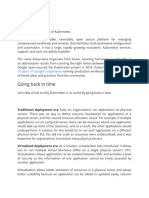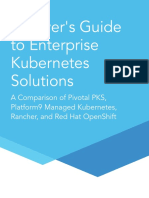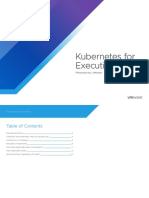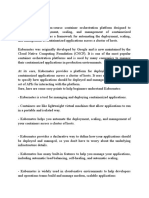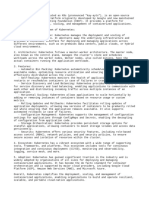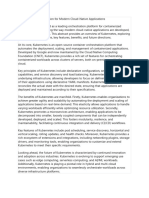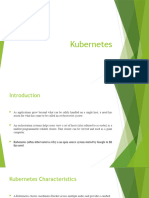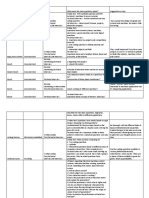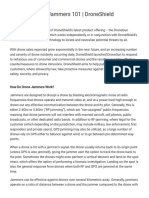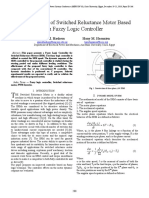0% found this document useful (0 votes)
32 views17 pagesKubernetes in DevOps
Kubernetes is essential in DevOps as it automates the deployment, scaling, and management of containerized applications, enhancing efficiency and resource utilization. It supports continuous deployment, high availability, and integrates with CI/CD pipelines, making it a cornerstone of modern cloud-native architectures. Notable companies across various industries, including Google, Amazon, and Netflix, leverage Kubernetes for its scalability, flexibility, and extensive ecosystem.
Uploaded by
Sai RajeevCopyright
© © All Rights Reserved
We take content rights seriously. If you suspect this is your content, claim it here.
Available Formats
Download as PDF, TXT or read online on Scribd
0% found this document useful (0 votes)
32 views17 pagesKubernetes in DevOps
Kubernetes is essential in DevOps as it automates the deployment, scaling, and management of containerized applications, enhancing efficiency and resource utilization. It supports continuous deployment, high availability, and integrates with CI/CD pipelines, making it a cornerstone of modern cloud-native architectures. Notable companies across various industries, including Google, Amazon, and Netflix, leverage Kubernetes for its scalability, flexibility, and extensive ecosystem.
Uploaded by
Sai RajeevCopyright
© © All Rights Reserved
We take content rights seriously. If you suspect this is your content, claim it here.
Available Formats
Download as PDF, TXT or read online on Scribd
/ 17









